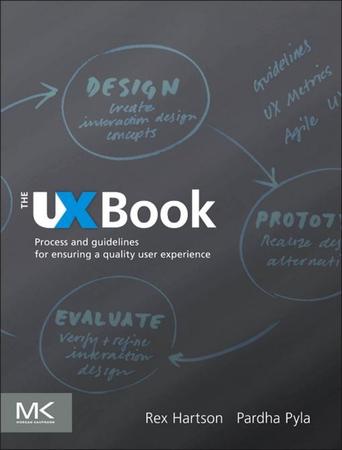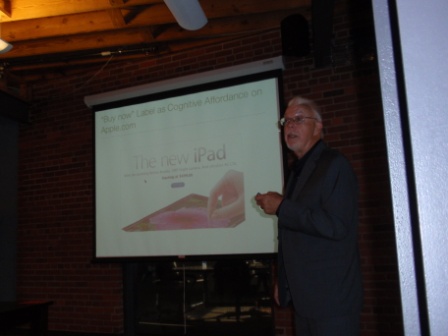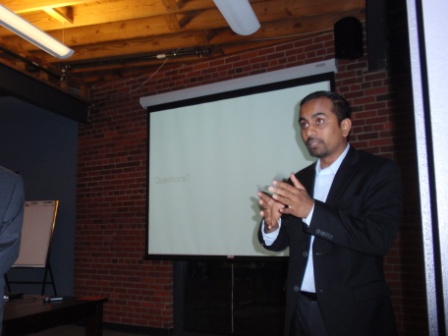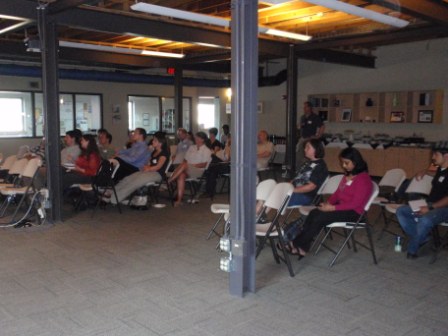 On July 26, The Triangle UXPA hosted a guest lecture by Rex Hartson and Pardha Pyla at the offices of Lulu in Raleigh. Titled “Affordances and their importance to UX Practioners” was co-sponsored with Bloomberg. Rex Hartson, Professor Emeritus of Computer Science at Virgina Tech, and Pardha Pyla, Senior Interaction Designer at Bloomberg L.P. provided a 90 minute overview of the key concepts and consideration of affordances in the design of human computer interactions. Over 40 Triangle UXPA members attended the event.
On July 26, The Triangle UXPA hosted a guest lecture by Rex Hartson and Pardha Pyla at the offices of Lulu in Raleigh. Titled “Affordances and their importance to UX Practioners” was co-sponsored with Bloomberg. Rex Hartson, Professor Emeritus of Computer Science at Virgina Tech, and Pardha Pyla, Senior Interaction Designer at Bloomberg L.P. provided a 90 minute overview of the key concepts and consideration of affordances in the design of human computer interactions. Over 40 Triangle UXPA members attended the event.
The talk was based on a chapter in their recent publication, The UX Book: Process and Guidelines for Ensuring a Quality User Experience. This new book is a comprehensive, practical field guide to understanding, assimilating, and applying the complete interaction design discipline.
In interaction design, the word “affordance” is often used to describe something that helps, aids or makes it possible for the user to do something, but Professor Hartson explained that there are serveral different types of affordances available to the designer.
- Cognitive Affordance
Cognitive affordance is a design feature that helps, aids, supports, facilitates, or enables thinking, learning, understanding, and knowing about something. Cognitive affordances play starring roles in interaction design, especially for less experienced users who need help with understanding and learning. As a simple example, the symbol of an icon that clearly conveys its meaning could be a cognitive affordance enabling users to understand the icon in terms of the functionality behind it and the consequences of clicking on it. Another cognitive affordance might be in the form of a clear and concise button label.
- Physical Affordance
Physical affordance is a design feature that helps, aids, supports, facilitates, or enables doing something physically. Adequate size and easy-to-access location could be physical affordance features of an interface button design enabling users to click easily on the button.
Because physical affordance has to do with physical objects, we treat active interface objects on the screen, for example, as real physical objects, as they can be on the receiving end of real physical actions (such as clicking or dragging) by users. Physical affordance is associated with the “operability” characteristics of such user interface artifacts. As many in the literature have pointed out, it is clear that a button on a screen cannot really be pressed, which is why we try to use the terminology “clicking on buttons.”
- Sensory Affordance
Sensory affordance is a design feature that helps, aids, supports, facilitates, or enables user in sensing (e.g., seeing, hearing, feeling) something. Sensory affordance is associated with the “sense-ability” characteristics of user interface artifacts, especially when it is used to help the user sense (e.g., see) cognitive affordances and physical affordances. Design issues for sensory affordances include noticeability, discernability, legibility (in the case of text), and audibility (in the case of sound) of features or devices associated with visual, auditory, haptic/tactile, or other sensations. As an example, the legibility of button label text is supported by an adequate size font and appropriate color contrast between text and background.
- Functional Affordance
Functional affordances connect physical user actions to invoke system, or back end, functionality. Functional affordances link usability or UX to usefulness and add purpose for physical affordance. They are about higher level user enablement in the work domain and add meaning and goal orientation to design discussions. In an external view it is easy to see a system function as an affordance because it helps the user do something in the work domain.
 Rex Hartson is Professor Emeritus of Computer Science at Virginia Tech, Blacksburg, VA, where he was the founding faculty member in human computer interaction (HCI). He’s a 30-year pioneer in HCI as a field and in User Experience as a discipline and practice.
Rex Hartson is Professor Emeritus of Computer Science at Virginia Tech, Blacksburg, VA, where he was the founding faculty member in human computer interaction (HCI). He’s a 30-year pioneer in HCI as a field and in User Experience as a discipline and practice.

Pardha Pyla is a Senior Interaction Designer at Bloomberg L.P., New York, NY, where he is leads the design team for mobile platforms. He is one of the pioneering researchers in the area of connecting software engineering and usability engineering lifecycles.
Overall, the presentation was outstanding with some great discussions afterwards. We greatly appreciated Rex and Pardha for taking the time to travel to Raleigh for this event and not charging the a speakers fee. We also thank Bloomberg for the the wonderful dinner catering from the local Raleigh restaurant Irregardless Cafe.
And thanks again to Lulu for hosting the event. Here are a few photos from the event.



